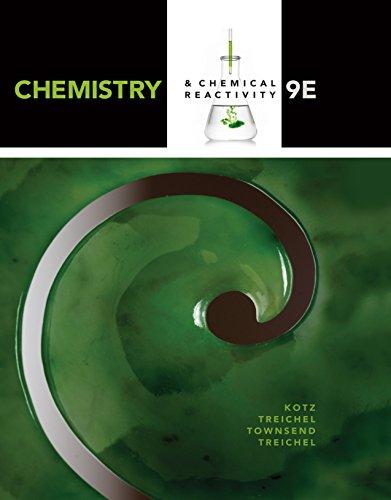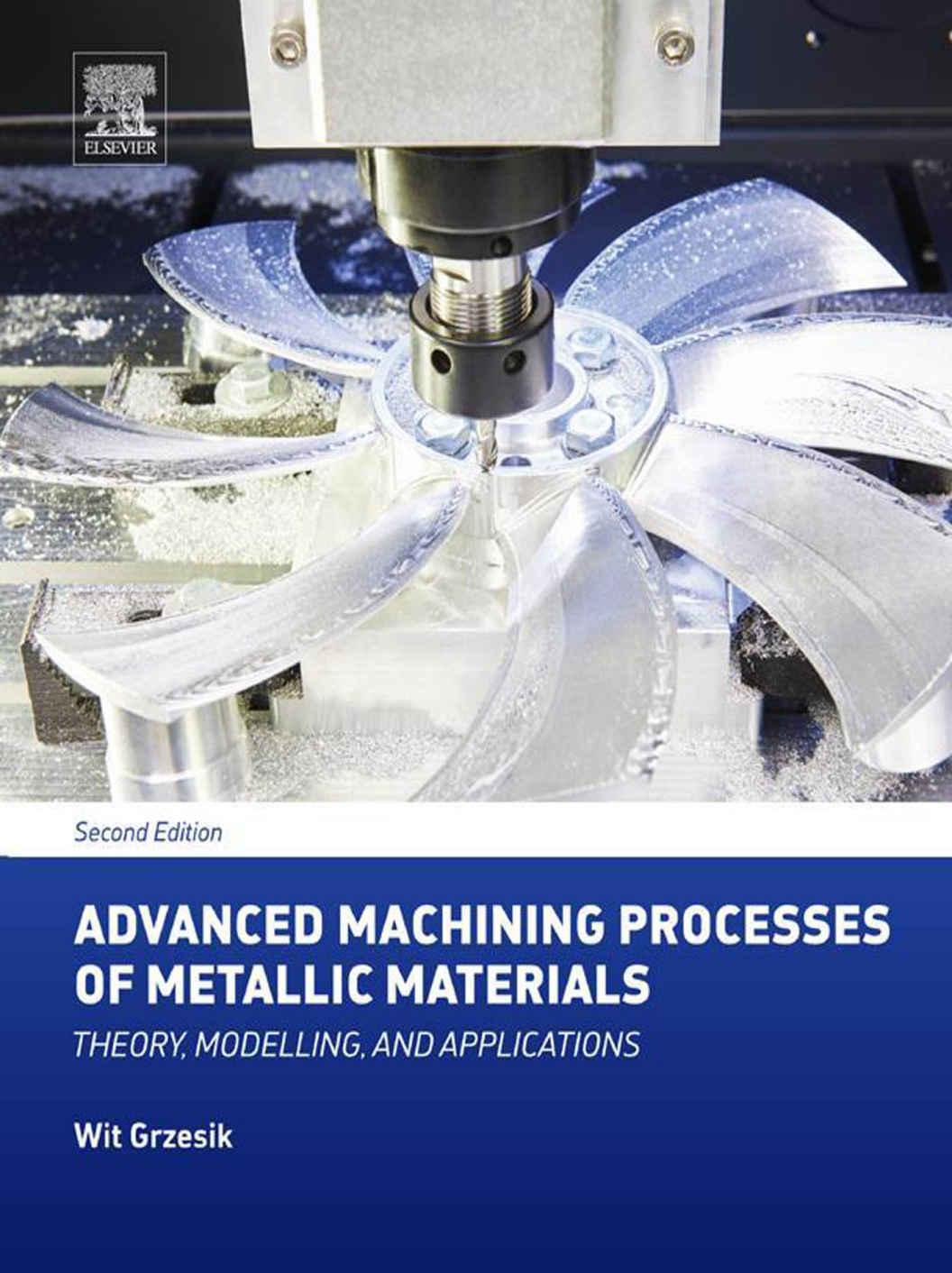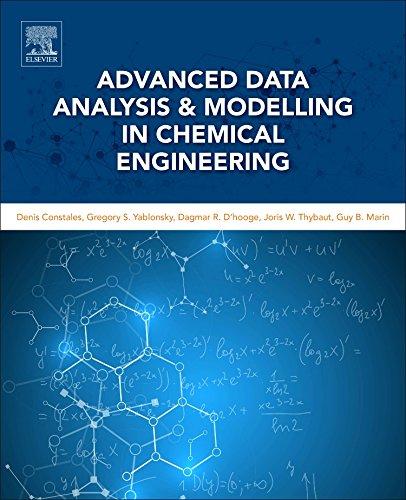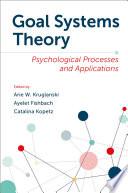ChemicalReactivityinConfinedSystems
Theory,ModellingandApplications
Editedby
PratimKumarChattaraj
DepartmentofChemistry
IndianInstituteofTechnologyKharagpur
Kharagpur
India
DebduttaChakraborty
DepartmentofChemistry
KatholiekeUniversiteit
Leuven
Belgium
Thiseditionfirstpublished2021 ©2021JohnWiley&SonsLtd
Allrightsreserved.Nopartofthispublicationmaybereproduced,storedinaretrievalsystem,ortransmitted,inany formorbyanymeans,electronic,mechanical,photocopying,recordingorotherwise,exceptaspermittedbylaw. Adviceonhowtoobtainpermissiontoreusematerialfromthistitleisavailableat http://www.wiley.com/go/permissions.
TherightofPratimKumarChattarajandDebduttaChakrabortytobeidentifiedastheauthorsoftheeditorial materialinthisworkhasbeenassertedinaccordancewithlaw.
RegisteredOffices
JohnWiley&Sons,Inc.,111RiverStreet,Hoboken,NJ07030,USA
JohnWiley&SonsLtd,TheAtrium,SouthernGate,Chichester,WestSussex,PO198SQ,UK
EditorialOffice
TheAtrium,SouthernGate,Chichester,WestSussex,PO198SQ,UK
Fordetailsofourglobaleditorialoffices,customerservices,andmoreinformationaboutWileyproductsvisitusat www.wiley.com.
Wileyalsopublishesitsbooksinavarietyofelectronicformatsandbyprint-on-demand.Somecontentthatappears instandardprintversionsofthisbookmaynotbeavailableinotherformats.
LimitofLiability/DisclaimerofWarranty
Inviewofongoingresearch,equipmentmodifications,changesingovernmentalregulations,andtheconstantflow ofinformationrelatingtotheuseofexperimentalreagents,equipment,anddevices,thereaderisurgedtoreview andevaluatetheinformationprovidedinthepackageinsertorinstructionsforeachchemical,pieceofequipment, reagent,ordevicefor,amongotherthings,anychangesintheinstructionsorindicationofusageandforadded warningsandprecautions.Whilethepublisherandauthorshaveusedtheirbesteffortsinpreparingthisbook,they makenorepresentationsorwarrantieswithrespecttotheaccuracyorcompletenessofthecontentsofthisworkand specificallydisclaimallwarranties,includingwithoutlimitationanyimpliedwarrantiesofmerchantabilityor fitnessforaparticularpurpose.Nowarrantymaybecreatedorextendedbysalesrepresentatives,writtensales materialsorpromotionalstatementsforthiswork.Thisworkissoldwiththeunderstandingthatthepublisheris notengagedinrenderingprofessionalservices.Theadviceandstrategiescontainedhereinmaynotbesuitablefor yoursituation.Youshouldconsultwithaprofessionalwhereappropriate.Neitherthepublishernorauthorshallbe liableforanylossofprofitoranyothercommercialdamages,includingbutnotlimitedtospecial,incidental, consequential,orotherdamages.Thefactthatanorganization,website,orproductisreferredtointhisworkasa citationand/orpotentialsourceoffurtherinformationdoesnotmeanthatthepublisherandauthorsendorsethe informationorservicestheorganization,website,orproductmayprovideorrecommendationsitmaymake.
Further,readersshouldbeawarethatwebsiteslistedinthisworkmayhavechangedordisappearedbetweenwhen thisworkwaswrittenandwhenitisread.Neitherthepublishernorauthorsshallbeliableforanylossofprofitor anyothercommercialdamages,includingbutnotlimitedtospecial,incidental,consequential,orotherdamages.
Forgeneralinformationonourotherproductsandservicesorfortechnicalsupport,pleasecontactourCustomer CareDepartmentwithintheUnitedStatesat(800)762-2974,outsidetheUnitedStatesat(317)572-3993orfax(317) 572-4002.
Wileyalsopublishesitsbooksinavarietyofelectronicformats.Somecontentthatappearsinprintmaynotbe availableinelectronicformats.FormoreinformationaboutWileyproducts,visitourwebsiteatww.wiley.com.
LibraryofCongressCataloging-in-PublicationData
Names:Chattaraj,PratimKumar,editor. | Chakraborty,Debdutta,editor.
Title:Chemicalreactivityinconfinedsystems:theory,modellingand applications/editedbyPratimKumarChattaraj,DebduttaChakraborty.
Description:Hoboken,NJ:Wiley,2021. | Includesbibliographical referencesandindex.
Identifiers:LCCN2021025002(print) | LCCN2021025003(ebook) | ISBN 9781119684022(cloth) | ISBN9781119683384(adobepdf) | ISBN 9781119683230(epub)
Subjects:LCSH:Reactivity(Chemistry)
Classification:LCCQD505.5.C4852021(print) | LCCQD505.5(ebook) | DDC541/.39–dc23
LCrecordavailableathttps://lccn.loc.gov/2021025002
LCebookrecordavailableathttps://lccn.loc.gov/2021025003
CoverDesign:Wiley
CoverImage:©DebduttaChakraborty
Setin9.5/12.5ptSTIXTwoTextbyStraive,Chennai,India
Contents
Preface xv
ListofContributors xvii
1EffectofConfinementontheTranslation-RotationMotionofMolecules:The InelasticNeutronScatteringSelectionRule 1
L.WilliamPoirier
1.1Introduction 1
1.2DiatomicsinC60 :Entanglement,TRCoupling,Symmetry,BasisRepresentation,and EnergyLevelStructure 4
1.2.1EntanglementInducedSelectionRules 4
1.2.2H@C60 5
1.2.3H2 @C60 7
1.2.3.1Symmetry 7
1.2.3.2SphericalBasisandEigenstates 7
1.2.3.3EnergyLevelOrderingwithRespectto �� 8
1.2.4HX@C60 10
1.3INSSelectionRuleforSpherical(Kh )Symmetry 11
1.3.1InelasticNeutronScattering 11
1.3.2GroupTheoryDerivationoftheINSSelectionRule 12
1.3.2.1Group-Theory-BasedINSSelectionRuleforCylindrical(C∞�� )Environments 12
1.3.2.2Group-Theory-BasedINSSelectionRuleforSpherical(Kh )Environments 12
1.3.3SpecificSystems,QuantumNumbers,andBasisSets 13
1.3.3.1H@sphere 14
1.3.3.2H2 @sphere 14
1.3.3.3HX@sphere 15
1.3.4BeyondDiatomicMolecules 15
1.3.4.1H2 O@sphere 15
1.3.4.2CH4 @sphere 17
1.3.4.3AnyGuestMoleculeinanySpherical(Kh )Environment 18
1.4INSSelectionRulesforNon-SphericalStructures 18
1.5SummaryandConclusions 20
Acknowledgments 22
References 22
2Pressure-InducedPhaseTransitions 25 WojciechGrochala
2.1Pressure,APropertyofAllFlavours,andItsImportancefortheUniverse andLife 25
2.2Pressure:IsotropicandAnisotropic,PositiveandNegative 26
2.3ChangesoftheStateofMatter 27
2.4CompressionofSolids 30
2.4.1IsotropicorAnisotropicCompressibility 30
2.4.2NegativeLinearCompressibility 30
2.4.3NegativeAreaCompressibility 31
2.4.4AnomalousCompressibilityChangesatHighPressure 31
2.5StructuralSolid-SolidTransitions 32
2.5.1StructuralPhaseTransitionsAccompaniedbyVolumeCollapse 32
2.5.2EffectsofVolumeCollapseonFreeEnergy 33
2.5.3Structure-InfluencingFactorsatCompression 34
2.5.4ChangesintheNatureofChemicalBondinguponCompressionanduponPhase Transitions 35
2.6SelectedClassesofMagneticandElectronicTransitions 36
2.6.1HighSpin–LowSpinTransitions 36
2.6.2ElectronicCom-vsDisproportionation 37
2.6.3Metal-to-MetalChargeTransfer 37
2.6.4Neutral-to-IonicTransitions 37
2.6.5MetallizationofInsulators(andResistingIt) 38
2.6.6TurningMetalsintoInsulators 39
2.6.7SuperconductivityofElementsandCompounds 39
2.6.8TopologicalPhaseTransitions 41
2.7ModellingandPredictingHPPhaseTransitions 41 Acknowledgements 42 References 42
3ConceptualDFTandConfinement 49
PaulGeerlings,DavidJ.Tozer,andFrankDeProft
3.1IntroductionandReadingGuide 49
3.2ConceptualDFT 50
3.3ConfinementandConceptualDFT 52
3.3.1Atoms:GlobalDescriptors 52
3.3.2Molecules:GlobalandLocalDescriptors 56
3.3.2.1ElectronAffinities 57
3.3.2.2HardnessandElectronicFukuiFunction 59
3.3.3InclusionofPressureintheE = E[N,v]Functional 63
3.4Conclusions 65 Acknowledgements 65 References 66
4ElectronicStructureofSystemsConfinedbySeveralSpatialRestrictions 69 Juan-JoséGarcía-Miranda,JorgeGarza,IlichA.Ibarra,AnaMartínez,Michael-Adán Martínez-Sánchez,MarcosRivera-Almazo,andRubiceliaVargas
4.1Introduction 69
4.2ConfinementImposedbyImpenetrableWalls 69
4.3ConfinementImposedbySoftWalls 72
4.4BeyondConfinementModels 74
4.5Conclusions 77 References 77
5UnveilingtheMysteriousMechanismsofChemicalReactions 81
SoledadGutiérrez-Oliva,SilviaDíaz,andAlejandroToro-Labbé
5.1Introduction 81
5.1.1Context 81
5.1.2IdeasandMethods 82
5.1.3Application 82
5.2EnergyandReactionForce 83
5.2.1TheReactionForceAnalysis(RFA) 83
5.2.2RFA-BasedEnergyDecomposition 84
5.2.3MarcusPotentialEnergyFunction 85
5.2.4MarcusRFA 86
5.3ElectronicActivityAlongaReactionCoordinate 87
5.3.1ChemicalPotential,Hardness,andElectrophilicityIndex 87
5.3.2TheReactionElectronicFlux(REF) 88
5.3.2.1PhysicalDecompositionofREF 88
5.3.2.2ChemicalDecompositionofREF 89
5.4AnApplication:theFormationofAminoacetonitrile 90
5.4.1EnergeticAnalysis 91
5.4.2ReactionMechanisms 91
5.5Conclusions 94 Acknowledgments 95 References 95
6APerspectiveontheSo-CalledDualDescriptor 99 F.Guégan,L.Merzoud,H.Chermette,andC.Morell
6.1Introduction:ConceptualDFT 99
6.2TheDualDescriptor:FundamentalAspects 99
6.2.1InitialFormulation 99
6.2.2AlternativeFormulations 100
6.2.2.1DerivativeFormulations 100
6.2.2.2LinkwithFrontierMolecularOrbitalTheory 101
6.2.2.3State-SpecificDevelopment 101
6.2.2.4MODegeneracy 102
6.2.2.5QuasiDegeneracy 102
6.2.2.6SpinPolarization 103
6.2.2.7GrandCanonicalEnsembleDerivation 105
6.2.3Real-SpacePartitioning 105
6.2.4DualDescriptorandChemicalPrinciples 106
6.2.4.1PrincipleofMaximumHardness 106
6.2.4.2LocalHardnessDescriptors 106
6.2.4.3LocalElectrophilicityandNucleophilicity 106
6.2.4.4LocalChemicalPotentialandExcitedStatesReactivity 107
6.3Illustrations 108
6.3.1WoodwardHoffmannRulesinDiels-AlderReactions 108
6.3.2PerturbationalMOTheoryandDualDescriptor 109
6.3.3MarkovnikovRule 109
6.4Conclusions 110 References 111
7MolecularElectrostaticPotentials:SignificanceandApplications 113 PeterPolitzerandJaneS.Murray
7.1AQuickReviewofSomeClassicalPhysics 113
7.2MolecularElectrostaticPotentials 113
7.3TheElectronicDensityandtheElectrostaticPotential 114
7.4CharacterizationofMolecularElectrostaticPotentials 115
7.5MolecularReactivity 116
7.6SomeApplicationsofElectrostaticPotentialstoMolecularReactivity 118
7.6.1 σ-Holeand π-HoleInteractions 118
7.6.2HydrogenBonding:A σ-HoleInteraction 119
7.6.3InteractionEnergies 120
7.6.4CloseContactsandInteractionSites 121
7.6.5BiologicalRecognitionInteractions 124
7.6.6StatisticalPropertiesofMolecularSurfaceElectrostaticPotentials 125
7.7ElectrostaticPotentialsatNuclei 126
7.8DiscussionandSummary 127 References 127
8ChemicalReactivityWithintheSpin-PolarizedFrameworkofDensity FunctionalTheory 135 E.ChamorroandP.Pérez
8.1Introduction 135
8.2TheSpin-PolarizedDensityFunctionalTheoryasaSuitableFrameworktoDescribe BothChargeandSpinTransferProcesses 137
8.3PracticalApplicationsofSP-DFTIndicators 141
8.4ConcludingRemarksandPerspectives 145 Acknowledgements 147 References 147
9ChemicalBindingandReactivityParameters:AUnifiedCoarseGrained DensityFunctionalView 167 SwapanK.Ghosh
9.1Introduction 167
9.2Theory 169
9.2.1ConceptofElectronegativity,ChemicalHardness,andChemicalBinding 169
9.2.1.1ElectronegativityandHardness 169
9.2.1.2InteratomicChargeTransferinMolecularSystems 169
9.2.1.3ConceptofChemicalPotentialandHardnessfortheBondRegion 170
9.2.1.4Spin-PolarizedGeneralizationofChemicalPotentialandHardness 171
9.2.1.5ChargeEquilibriationMethods:SplitChargeModelsandModelswithCorrect DissociationLimits 172
9.2.1.6DensityFunctionalPerturbationApproach:ACoarseGrainingProcedure 173
9.2.1.7AtomicChargeDipoleModelforInteratomicPerturbationandResponse Properties 174
9.2.1.8ForceFieldGenerationinMolecularDynamicsSimulation 174
9.3PerspectiveonModelBuildingforChemicalBindingandReactivity 175
9.4ConcludingRemarks 175 Acknowledgements 175 References 175
10SoftnessKernelandNonlinearElectronicResponses 179 PatrickSenet
10.1Introduction 179
10.2LinearandNonlinearElectronicResponses 181
10.2.1LinearResponseTheory 181
10.2.1.1Ground-State 181
10.2.1.2LinearResponses[1] 181
10.2.2NonlinearResponsesandtheSoftnessKernel 182
10.2.3EigenmodesofReactivity 184
10.3One-DimensionalConfinedQuantumGas:AnalyticalResultsfromaModel Functional 185
10.4Conclusion 188 References 188
11ConceptualDensityFunctionalTheoryintheGrandCanonical Ensemble 191 JoséL.Gázquez,MarcoFranco-Pérez,PaulW.Ayers,andAlbertoVela
11.1Introduction 191
11.2FundamentalEquationsforChemicalReactivity 192
11.3Temperature-DependentResponseFunctions 195
11.4LocalCounterpartofaGlobalDescriptorandNon-LocalCounterpartofaLocal Descriptor 200
11.5ConcludingRemarks 203
Acknowledgements 204
References 204
12EffectofConfinementontheOpticalResponsePropertiesofMolecules 213 WojciechBartkowiak,MartaChołuj,andJustynaKozłowska
12.1Introduction 213
12.2ElectronicContributionstoLongitudinalElectric-DipolePropertiesofAtomicand MolecularSystemsEmbeddedinHarmonicOscillatorPotential 215
12.3VibrationalContributionstoLongitudinalElectric-DipolePropertiesofSpatially ConfinedMolecularSystems 218
12.4Two-PhotonAbsorptioninSpatialConfinement 219
12.5Conclusions 220
References 221
13ADensityFunctionalTheoryStudyofConfinedNobleGasDimersin FullereneMolecules 225 DongboZhao,MengLi,XinHe,BinWang,ChunyingRong,PratimK.Chattaraj, andShubinLiu
13.1Introduction 225
13.2ComputationalDetails 226
13.3ResultsandDiscussion 227
13.3.1ChangesinStructure 227
13.3.2ChangesinInteractionEnergy 227
13.3.3ChangesinBondingEnergy 228
13.3.4ChangesinEnergyComponents 228
13.3.5ChangesinNoncovalentInteractions 229
13.3.6ChangesinInformation-TheoreticQuantities 231
13.3.7ChangesinSpectroscopy 232
13.3.8ChangesinReactivity 233
13.4Conclusions 236
Acknowledgments 236 References 236
14ConfinementInducedChemicalBonding:CaseofNobleGases 239 SudipPan,GabrielMerino,andLiliZhao
14.1Introduction 239
14.2ComputationalDetailsandTheoreticalBackground 241
14.3TheBondinginHe@C10 H16 :ADebate 243
14.4ConfinementInducingChemicalBondBetweenTwoNgs 244
14.5XNgYInsertionMolecule:ConfinementinOneDirection 251
14.6Conclusions 254
Acknowledgements 255
References 255
15EffectofBothStructuralandElectronicConfinementsonInteraction, ChemicalReactivityandProperties 263
MaheshKumarRavva,RavinderPawar,ShyamVinodKumarPanneer,VenkataSuryaKumar Choutipalli,andVenkatesanSubramanian
15.1Introduction 263
15.2GeometricalChangesinSmallMoleculesUnderSphericalandCylindrical Confinement 264
15.3HydrogenBondingInteractionofSmallMoleculesintheSphericalandCylindrical Confinement 265
15.4SphericalandCylindricalConfinementandChemicalReactivity 267
15.5ConcludingRemarks 268 References 270
16EffectofConfinementonGasStoragePotentialandCatalyticActivity 273 DebduttaChakraborty,SukantaMondal,RanjitaDas,andPratimKumarChattaraj
16.1Introduction 273
16.2EndohedralGasAdsorptionInsideClathrateHydrates 274
16.3HydrogenHydrates 276
16.4MethaneHydrates 278
16.5NobleGasHydrates 279
16.6ConfinementInducedCatalysisofSomeChemicalReactions 280
16.7Outlook 285 Acknowledgements 285 References 286
17EngineeringtheConfinedSpaceofMOFsforHeterogeneousCatalysisof OrganicTransformations 293 TapanK.Pal,DineshDe,andParimalK.Bharadwaj
17.1Introduction 293
17.2CatalysisattheOpenMetalSites 293
17.2.1MOFsEndowedwithOpenMetalSite(s) 294
17.2.2RemovalofVolatileMoleculesFromMetalNodestoPerformCatalysis 297
17.2.3CatalysisattheMetalnodePostTransmetalation 299
17.3FunctionalizationintheMOFtoFurnishCatalyticSite 301
17.3.1AttachingtheCatalyticallyActiveMoietiestotheMetalNodes(SBU) 301
17.3.2PreconceivedCatalyticSiteintotheLinker 301
17.3.3PostSyntheticModificationoftheLinker 304
17.3.4MOFswithLinkersHavingCoordinatedMetalIons(Metalloligands) 306
17.4MOFsasBifunctionalCatalyst 310
17.5Impregnation/EncapsulationofNanoparticlesintheMOFCavityforCatalysis 317
17.6EngineeringHomochiralMOFsforEnantioselectiveCatalysis 320
17.7Conclusion 325
Acknowledgements 326 References 326
18ControllingExcitedStateChemistryofOrganicMoleculesinWaterThrough Incarceration 335 V.Ramamurthy
18.1Introduction 335
18.2ComplexationPropertiesofOA 337
18.3PropertiesofOAcapsule 339
18.4DynamicsofEncapsulatedGuests 340
18.5DynamicsofHost-GuestComplex 346
18.6RoomTemperaturePhosphorescenceofEncapsulatedOrganicMolecules 353
18.7ConsequenceofConfinementonthePhotophysicsofAnthracene 356
18.8SelectivePhoto-OxidationofCycloalkenes 358
18.9RemoteActivationofEncapsulatedGuests:ElectronTransferAcrossanOrganic Wall 360
18.10Summary 362
Acknowledgements 363 References 363
19EffectofConfinementonthePhysicochemicalPropertiesofChromophoric Dyes/DrugswithCucurbit[n]uril:ProspectiveApplications 371 J.Mohanty,N.Barooah,andA.C.Bhasikuttan
19.1Introduction 371
19.1.1ConfinementofDyes/DrugsinMacrocyclicHosts 372
19.1.1.1Cyclodextrins 372
19.1.1.2Calixarenes 373
19.1.1.3Cucurbiturils 373
19.2ConfinementinCucurbiturilHosts:EffectsonthePhysicochemicalPropertiesofGuest Molecules–AdvantagesforVariousTechnologicalApplications 374
19.2.1EnhancedPhotostabilityandSolubilityofRhodamineDyes 375
19.2.1.1Water-BasedDyeLaser 376
19.2.2EnhancedLuminescenceandPhotostabilityofCH3 NH3 PbBr3 Perovskite Nanoparticles 377
19.2.3EnhancedAntibacterialActivityandExtendedShelf-LifeofFluoroquinoloneDrugs withCucurbit[7]uril 377
19.2.4EffectofConfinementonthePrototropicEquilibrium 379
19.2.4.1Salt-InducedpKa TuningandGuestRelocation 379
19.2.5ConfinementinCucurbit[7]uril-MediatedBSA:Stimuli-ResponsiveUptakeand ReleaseofDoxorubicin 380
19.2.6EffectofConfinementontheFluorescenceBehaviorofChromophoricDyeswith Cucurbiturils 380
19.2.6.1FluorescenceBehaviorofChromophoricDyeswithCucurbit[7]uril 381
19.2.6.2FluorescenceBehaviorofChromophoricDyeswithCucurbit[8]uril 383
19.2.7EffectofConfinementontheCatalyticPerformancewithinCucurbiturils 386
19.3Conclusion 388 Acknowledgement 389 References 389
20Box-ShapedHosts:EvaluationoftheInteractionNatureandHost CharacteristicsofExBoxDerivativesinHost-GuestComplexesfrom ComputationalMethods 395
GiovanniF.CaramoriandAlvaroMuñoz-Castro
20.1Introduction 395
20.2NoncovalentInteractionsThroughEnergyDecompositionAnalysis 396
20.3Ex0 Box4+ (CBPQT4+ ) 398
20.4ExBox4+ andEx2 Box4+ 400
20.5LargerBoxes 406
20.6NMRFeatures 408
20.7AllCarbonCounterpart 409
20.8Conclusions 409
Acknowledgments 410 References 411
Index 417
Preface
Confinedsystemsoftenexhibitunusualbehaviorregardingtheirstructure,stability,reactivity, bonding,interactionsanddynamics.Quantizationisadirectconsequenceofconfinement. Confinementmodifiestheelectronicenergylevels,orbitals,electronicshellfilling,etc.,ofa systemtherebyaffectingitsreactivityaswellasvariousresponsepropertiesascomparedtothe correspondingunconfinedsystem.Confinementmayenforcetworaregasatomstoformapartly covalentbond.Gasstorageisfacilitatedthroughconfinementandunprecedentedoptoelectronic propertiesareobservedincertaincases.Someslowreactionsgethighlyacceleratedinan appropriateconfinedenvironment.
Analyzingthereactivityofatomsandmolecules,presentinaconfinedenvironment,byutilizingvarioustheoreticalandcomputationalmethodscanunravelnumerousnewparadigms vis-à-vis physicochemicalpropertiesofthesystemsunderconsideration.Therefore,confinedquantumsystemshavebeenextensivelyanalyzedfrombothepistemologicalandappliedpointsofview.The crucialpointwhileanalyzingquantumconfinedsystemsistobeabletoconstructanaccuratetheoreticalmodelthattakesintoaccountchangesintheelectronicwavefunctionduetotheeffectof confinement.Tothisend,modeltheoreticalcalculationscouldbeconceivedbysuitablechoiceof theboundarycondition.Host–guestcomplexesprovideanideal‘real’platformwherethechanges ofreactivityandresponsepropertiesofvarioussystemscouldbeunderstood.Tothisend,densityfunctionaltheory(DFT)basedcalculationprovidesacost-effectiveandreasonablyaccurate method.
Ontheotherhand,experimentalstudieshavehelpedtoshedlightonmanyfascinatingaspectsof confinement.Theutilityofconfinedsystemscouldbegaugedinvariousdisciplinessuchascatalysis,gasstorage,designingsuperioroptoelectronicandmagneticmaterials,etc.
Inthisbook,severalexperts,whohavemadeseminalcontributionsinunderstandingthebehaviorofconfinedsystems,havewrittenauthoritativeaccountsonstate-ofthe-artresearchtopics encompassingboththeoreticalaswellasexperimentalendeavors.Hopefully,thisbookwillbebeneficialforgraduatestudentsinchemistry,materialsscienceandphysicsinunderstandingtherecent developmentsinthisfield.
ListofContributors
PaulW.Ayers
McMasterUniversity
Canada
NilotpalBarooah BhabhaAtomicResearchCentre
Mumbai India
WojciechBartkowiak WroclawUniversityofScienceandTechnology
Poland
ParimalKantiBharadwaj IndianInstituteofTechnologyKanpur
India
A.C.Bhasikuttan
BhabhaAtomicResearchCentre
Mumbai India
GiovanniF.Caramori FederalUniversityofSantaCatarina–UFSC Brazil
EduardoChamorro UniversidadAndrésBello
Chile
DebduttaChakraborty KatholiekeUniversiteit
Leuven
Belgium
PratimKumarChattaraj IndianInstituteofTechnologyKharagpur Kharagpur India
HenryChermette UniversitédeLyon1 France
MartaChołuj WroclawUniversityofScienceandTechnology Poland
SilviaDíaz PontificiaUniversidadcatólicadeChile Chile
FrankDeProft DurhamUniversity Durham UK
MarcoFranco-Pérez UniversidadNacionalAutónomadeMéxico Mexico
JorgeGarzaOlguín UAM-Iztapalapa Mexico
JoséLuisGázquez UniversidadAutónoma Metropolitana-Iztapalapa Mexico
ListofContributors
PaulGeerlings VrijeUniversiteitBrussel Belgium
FrédéricGuégan UniversitédePoitiers France
SoledadGutiérrez-Oliva PontificiaUniversidadCatólicadeChile Chile
SwapanKumarGhosh UniversityofMumbai India
WojciechGrochala UniversityofWarsaw Poland
JustynaKozłowska WroclawUniversityofScienceandTechnology Poland
ShubinLiu UniversityofNorthCarolina USA
GabrielMerino Cinvestav Mexico
LyndaMerzoud UniversitédeLyon1 France
JyotirmayeeMohanty BhabhaAtomicResearchCentre Mumbai India
ChristopheMorell UniversitédeLyon1 France
AlvaroMuñozCastro UniversidadAutónomadeChile Chile
SudipPan Philipps-UniversitätMarburg Germany
PatriciaPerez UniversidadAndrésBello Chile
L.WilliamPoirier TexasTechUniversity USA
PeterPolitzer UniversityofNewOrleans USA
VaidhyanathanRamamurthy UniversityofMiami USA
ChunyingRong HunanNormalUniversity China
PatrickSenet UniversitédeBourgogneFranche-Comté (UBFC) France
VenkatesanSubramanian CSIR-CentralLeatherResearchInstitute India
AlejandroToro-Labbe PontificiaUniversidadCatolicadeChile Chile
DavidJ.Tozer DurhamUniversity Durham UK
RubiceliaVargas UniversidadAutónomaMetropolitana Iztapalapa
AlbertoVela Cinvestav Mexico
DongboZhao YunnanUniversity China
LiliZhao NanjingTechUniversity China
EffectofConfinementontheTranslation-RotationMotionof Molecules:TheInelasticNeutronScatteringSelectionRule
L.WilliamPoirier*
TexasTechUniversity,USA
1.1Introduction
Oneofthecoretheoreticalideasusedtounderstandthedynamicsoffreemoleculesisthe simplifyingnotionthattheoverall(i.e.,center-of-mass)translationalmotioncanbecleanlyseparatedfrominternalvibrationsandrotations.Indeed,thisseparationissouniversallyapplied–and thetranslationalmotionsoeasilydealtwith–thatitcanbeeasyto“forget”thatthelattereven exists!Ontheotherhand,ifyouplacethatsamemoleculeinananoconfinedenvironment,the situationcanbevastlydifferent.Firstandforemost,thecontinuumofstatesthatcharacterizes translationalmotionforfreemoleculesnecessarilybecomes quantized intheconfinedcontext. Thequantumtranslationalstatesforthetrapped“guest”moleculecanbe“particle-in-a-boxlike” ormorecomplicated,dependingonthenatureoftheexternalfieldprovidedbythecagestructure. Ofcourse,largercagesgiverisetosmallertranslationallevelspacings–whichareinanyevent generallysmallerthantherotationallevelspacings(and much smallerthanthevibrationallevel spacings).Iftheconfinementisverysevere,however,thenthetranslationalandrotationallevel spacingscanbecomecomparabletoeachother–andevenstronglycoupled.
ThisisthesituationforsmallmoleculestrappedinsideC60 fullerenecages–e.g.,H2 @C60 [1–16],HD@C60 [4,7,12,15,17,18],HF@C60 [14–16,19],H2 O@C60 [14–16,20,21],and CH4 @C60 [15,22],allofwhichwillbeconsideredinthischapter.Basedonthephysicalsizeof thefullerene(diameter ≈ 7Å),onemightwellimaginethatanumberofguestmoleculescould becrammedintoasingleC60 cage.Inreality,theguestmoleculesaretrappedvialong-range vanderWaalsinteractionsthatpreventthemfromgettingcloserthanafewÅfromthecage wall.Consequently,the effective cagesizeismuchsmaller–ontheorderofthesizeoftheguest moleculeitself.Thisimpliesthat:(a)onlyoneguestmoleculecanfitinsideasingleC60 cage; (b)thecorrespondingtranslationallevelspacingiscomparabletotherotationallevelspacing.It ishardlysurprising,then,toalsofindthattranslationandrotationareindeedstronglycoupled inthesesystems.Thiscomplicateslifefromatheoretical/computationalstandpoint,forwhich onemustadoptanexact,coupledquantumdynamicaltreatment,encompassingallrelevant translation-rotation(TR)guestmoleculedegreesoffreedom[3–5,15,16,19,23–25].Thatsaid,the combinedTRstatesthatresultarenotnecessarilyentirelydevoidofstructureeither–itisjustnot thatofthestandardformthatoneexpectsintermsofTRseparability.
*Email:bill.poirier@ttu.edu
ChemicalReactivityinConfinedSystems:Theory,ModellingandApplications, FirstEdition.EditedbyPratimKumarChattarajandDebduttaChakraborty. ©2021JohnWiley&SonsLtd.Published2021byJohnWiley&SonsLtd.
1EffectofConfinementontheTranslation-RotationMotionofMolecules
Inadditiontoprovidingafundamentallydifferentspectroscopicpicture,thestrongconfinementinducedTRcouplingalsogivesrisetoaremarkablephysicaleffectthatwasoncethoughttobe impossible– selectionrules forinelasticneutronscattering(INS)[26–28].INSisanexperimental techniqueinwhichabeamofneutronsisscatteredthroughnuclearforceinteractionswiththe nucleiofthetargetsample.Itisanextremelyusefultoolforprobingnanoconfinedhydrogen,in largepartbecausetheHatomnucleusprovidesthe largest neutronscatteringcrosssectionacross theentireperiodictable.Eventhatofthe“secondplace”contender–i.e.,deuterium–ismorethan anorderofmagnitudesmaller.INSoffersotheradvantagesaswell,suchastheabilitytoexamine transitionsbetweenindividualquantumstates–includingortho-paranuclearspintransitionsin H2 ,whichwouldbeforbidden,e.g.,inanelectricdipoleorevenRamanfar-infrared(IR)spectrum. However,whereassuchopticallyforbiddenspectroscopictransitionscertainlyareallowedinINS, thisisnoguaranteethat allother transitionsarealsonecessarilyallowed.
ThatINSspectroscopydoesindeedhaveforbiddentransitions,wasfirstproposedandexperimentallyverifiedforH2 @C60 ,inastunningsetofpapersbyBa ˇ ci ´ c,Horsewill,andcoworkers [9,10,29,30].Inthisearlierwork,inadditiontocomputingtheTRquantumeigenstatesthemselves (energylevelsandwavefunctions)[3–5],anexplicitnumericalsimulationoftheexperimentalINS spectrumwasalsoperformed[9,12,29,30].Theserepresentheroiccalculations,appliedtoeachTR transitionindividually,whichalsotakevariousexperimentalcircumstancesintoproperaccount. TheendresultisareasonablyaccuratepredictionofbothINStransitionenergiesandintensities(both“stickspectra”andmoreexperimentally-relevantconvolvedspectracanbeobtained). Inthismanner,itwasdiscoveredthatsometransitionintensitiesforH2 @C60 arevastlysmaller thanothers–byfourormoreordersofmagnitude.Thisprovidedexcellentnumericalevidence foraselectionrule–which,indeed,wassubsequentlyconfirmedthroughactualINSexperiments [7,8,10].
Asimpressiveandunexpectedasthisdiscoveryprovedtobe,oneofthedrawbacksoftheabove approachisthatonemustinferageneralpatternfortheselectionrule,fromamongstanecessarily limitedsetofspecifictransitions.Indeed,thisledBa ˇ ci ´ candcoworkerstoinitiallyassumeaselection ruleforH2 @C60 ofthefollowingform:
restrictedINSselectionruleforH2 @C60 (fromp-H2 groundstate):Transitionsare forbiddentoallstatesforwhich (j + l ��)= 1[note:alltermswillbeexplained].
Infact,thecorrectrulefortransitionsstartingfromtheH2 @C60 groundstateismoregeneral:
correctINSselectionruleforH2 @C60 (fromp-H2 groundstate):Transitionsareforbiddentoallstatesforwhich (j + l ��)= odd.
Totheauthor’sknowledge,thelatterformabovewasfirstproposedbytheauthorhimself,ata scientificmeetinginMay,2015.SinceconfirmedassignmentsfortheexperimentalH2 @C60 data didnotexistbeyond (j + l ��)= 2,thetheoreticalsimulationswerenotperformedbeyondthis pointeither,andsotheavailableinformationatthetimewasconsistentwith either ofthetworules above.Thisstateofaffairsmotivatedthepresentauthortodevelopa grouptheoretical derivationof thegeneralINSselectionrule[11].Inparallelwiththiseffort,Ba ˇ ci ´ candcoworkersextendedthe analyticalpartoftheircalculationsofthetransitionintegrals[12],toencompassallpossibleinitial andfinalstates.Bothapproachesthengaverisetothefollowing,
mostgeneralINSselectionruleforH2 @C60 :Transitionsareforbiddenbetweenstates forwhich (j + l ��) changesfromeventoodd(orvice-versa),andatleastone �� = 0.
Aswillbedescribedinthischapter,thegrouptheoryapproachprovidesphysicalunderstanding, andalsohasthegreatadvantagethatitleadstothecorrectandcompletelygeneralINSselection rulefortheappropriatesymmetrygroup,“allatonce.”However,thisapproachhassomelimitations andissues,aswell,whichwillalsobeaddressed.Tobeginwith,itdoesnotprovideanyintensity informationforallowedtransitions;forthis,itisnecessarytocalculatetransitionintegralsexplicitly,asperBa ˇ ci ´ cet.al.Secondlythereisthequestionofchoosingthemostcorrectsymmetrygroup toworkwith,intermsofexperimentalrelevance.ThisisaparticularlyimportantquestionforINS spectroscopy,forwhichthereisapreferreddirectionororientation–i.e.,thatofthe momentum transfervector , ⃗ k,ofthescatteredneutronbeam.Thirdly,therearesomegrouptheoreticalcomplicationsthatarise,duetothefactthattheINSinteractionoperatoritselfisincommensuratewithmost ofthestandardmolecularpointgroups–akeydifference,e.g.,fromopticalspectroscopy.Finally, alltruegroup-theory-basedselectionrulesareexpressedintermsofthe irreduciblerepresentations (irreps)oftheappropriatesymmetrygroup.Whilethisformofaselectionruleistrulyuniversal,for specificsystemsitisstillnecessarytoassignirreplabelstoindividualquantumstatesand/orbasis functions–therebymakinganassociationwiththepertinent quantumnumbers forthosesystems. Onbalance,itisclearthat both thegrouptheoryandexplicitintegralapproachesarenecessaryfor interpretingandpredictingINSexperiments,astheyprovidecomplementaryunderstanding.
Since2015,Ba ˇ ci ´ c,Horsewill,Felker,andothershavecontinuedtoexploretheINSselection rule–togetherwithotherTReffectsofnanoconfinement–throughafruitfulsynergythat hasemergedbetweentheoryandexperiment.ThesehighlyinterestingTReffectshavenow beenobservedand/orpredictedacrossarangeofnanoconfinedsystems.RegardingtheINS selectionruleitself,theirrep-basedversionof[11]isinprinciplevalidforanymoleculeinany sphericalenvironment(section1.3.2).Intermsofspecificbasissetsandquantumstates,Ba
ci ´ c andcoworkershavegeneralizedtheruleforany diatomic moleculeinasphericalenvironment, usingtheirexplicitintegralapproach.TheyhavealsoappliedthismethodologytobothHD@C60 [4,7,12,15,17,18]andHF@C60 [14–16,19],anddiscoveredforbiddenINStransitionsinbothof thesenanoconfinedsystems.ExperimentsforH2 O@C60 [12,20]suggestaselectionruleforthis systemaswell.AlloftheserecentfindingsindicatethatforbiddenINStransitionsmaybemuch moreprevalentthanoriginallyrealized,withfuturestudiespotentiallyaddressinglargercage systemssuchasH2 @C70 [5],(H2 )2 @C70 [31],etc.Otherrefinementsincludethedevelopmentof improvedpotentialenergysurfaces(PESs)[32],and/ortheexplicitincorporationofvibrational effects.
Anotherimportantrecentdirectionhasbeentheconsiderationofthe largerenvironment surroundingagivenC60 cage,andtheroleof intercageinteractions [14,16,19,33,34].Forexample, FelkerandBa ˇ ci ´ chaveexaminedelectric-dipolecouplingbetweenthetwoguestH2 Omoleculesin (H2 O@C60 )2 [33],whereasRoyandcoworkershavestudiedthedipoleinteractionin(HF@C60 )n whenthe n cagesforma“peapod”arrangement[34].Onefascinatingandrelatedfindingpertains tothesmall(∼1cm 1 )butpuzzlinglevel-splittingobservedexperimentallyinthe j = 1statesof H2 @C60 ,HF@C60 ,andH2 O@C60 [6,13–16,19,20].Thesesplittingsbreaktheexpectedspherical oricosahedrallevelpattern,implyingareductioninsymmetrycausedbythelargerenvironment. Whereasvariousexplanationshavebeenprofferred(includingtheaforementionedguest–guest dipoleinteraction),theprecisecausewasrecentlydefinitivelyestablished[14–16]asbeingdueto
1EffectofConfinementontheTranslation-RotationMotionofMolecules
neighboringC60 cagesinthesolid–arrangedinanalternating“P”orientation–whichreducethe molecularpointgroupto S6 .
Fromagrouptheoryperspective,oneofthemostintriguingoftheaboverecentresultsarethe forbiddenINStransitionsthathavebeenpredictedforbothHD@C60 [12,15,18]andHF@C60 [19].RecallthatneutronsonlyinteracteffectivelywithHatomnuclei–ofwhichthesetwosystems eachcontainonlyone.Yet,fromgrouptheoryarguments[35,36],ithasbeenestablishedthat thereareno single-atomwavefunctionsthatbelongtotheirrepsnecessarytoeffectaforbiddenINS transition.Atleasttwoparticlesarenecessarytorealizetherequisiteirreps–inmuchthesameway thatindiatomicmolecules,atleasttwoelectronsarerequiredtorealizeanelectronicstatewith Σ character[37,38].Thisstateofaffairsunderscorestheneedforfurthertheoreticaldevelopmentin areconcilingvein–thereby,inpart,motivatingthepresentandfutureeffort.Theresolutionofthe dilemmawillbepresentedinsection1.2.1,butcanbesummarizedinasingleword: entanglement. Evidently,recentdevelopmentsinthestudyofquantumconfinementeffectsintheTRdynamics ofsmallmoleculesofferusplentyofmaterialtoponder.Inanyevent,thefieldisclearlyproceedingataveryrapidpace,beyondwhatcanbereviewedindetailinthissinglechapter.Accordingly, wechoosetofocushereprimarilyontheINSselectionruleasitappliestodiatomicmolecules confinedtospherical(orsphere-like)environments.Aspertheprecedingparagraph,animportant aimistoreconcilethegrouptheoryandexplicitintegralapproaches,inamannerthatwillstimulatemutualdevelopmentsgoingforward,andotherwisestreamlinefutureprogress.Amongother aspects,thiseffortnecessarilyrequiresthatanexplicitassociationbemadebetweenirreplabels andquantumstates/basisfunctions/quantumnumbers,forspecificmolecularsystems.Finally,we addressprospectsformoving beyond allpreviousINSselectionruleapplicationstodate–byconsideringguestmoleculesthatarelargerthandiatomic,and/orhostcagesotherthanspherical.Indeed, wealsoderivehereaquantum-number-basedINSselectionrulefor H2 O@C60 ,anduseittoprovide unambiguoustransitionassignmentsfortheexperimentalINSspectrum[12,20](section1.3.4.1).
1.2Diatomicsin C60 :Entanglement,TRCoupling,Symmetry,Basis Representation,andEnergyLevelStructure
1.2.1EntanglementInducedSelectionRules
Intheusualgrouptheoryprocedure,selectionrulesaredeterminedbysandwichingtheinteraction operatorbetweenbraandketsystemstates,anddecomposingtheresultanttriple-direct-productof irrepsintoitsownirreducibleform.(ThisprocedureisworkedoutindetailforthecaseofINSspectroscopyinsection1.3.1.)Quantummechanics,however,requirescarefulconsiderationofwhat, exactly,ismeantby“thesystem.”Inparticular,theapproachaboveisonlyvalidifthesystemis notappreciablyentangledwithitssurroundings.Putanotherway,itpresumesaseparableproduct formforthe“totalsystem”wavefunction:
Ψtotal = �� × ��surroundings , (1.1) where �� isthewavefunctionofthesystemitself.Therefore,whendefiningwhichpartofourexperimentalsampletoregardas“thesystem,”thisshouldbetakenasthesmallestpiecethatincludesall oftheconstituentparticlesofinterest, andalso leadstoanunentangledstateoftheEq.(1.1)form. Forthepresentpurpose,weareconsideringadiatomicguestmoleculetrappedwithinaC60 cage.ThestrongestINSsignalsareobservedwhenatleastoneofthetwoatomsishydrogen.Letus thereforeconsideradiatomicofthe“HX”variety,whereXisanyatom other thanhydrogen.Inthe
HX@C60 system,onemaypresumethatthereislittleentanglementbetweenthehostcageandthe guestdiatomic.Nevertheless,theHatomis strongly entangledwithX;HXisamolecule,afterall. Consequently,thesmallestunentangledunitthatcanprovideanINSsignalistheHXmolecule, whichmustbetakenas“thesystem”forgrouptheorypurposes.Wemustworkwithquantum wavefunctionsofthecombinedHXsystem–notofHitself–eventhoughthenucleusXismostly “dark,”insofarastheneutronbeamisconcerned.Thissituationisreminiscentofthemannerin whichtheexistenceofablackholemaybeinferredfromtheobservedbehaviorofitspartnerstar, eventhoughtheblackholeitselfcannotbedirectlyseen.
Includingboththe“bright”andentangled“dark”particlesinthedefinitionof“thesystem”can giverisetodifferentselectionrulesthanifjustthebrightparticlesalonewereused.Thisrather intriguingsituationgivesrisetoaneffectthatmightbecalled entanglementinducedselectionrules (EISR).Inthiswork,wedemonstratethattheforbiddenINStransitionspredictedforHD@C60 and HF@C60 areindeedduesolelytoentanglementwiththedarknucleus,X=DorF–andtherefore disappearentirelyforthesystemH@C60 .Inprinciple,theEISRideashouldnotberestricted toINSspectroscopy,butcouldalsobeapplied,e.g.,inopticalspectroscopy.SowhyisEISR evidentlynotdiscussedinthelattercontext?Infact,itturnsoutthattheEISReffectsometimes does manifestinopticalspectroscopy,butwhenitdoesso,itisknownbyother,specificnames inspecificinstances–e.g.,the“Herzberg-TellerEffect”[37].InterestinglyintheHerzberg-Teller context,EISRservesto remove anelectric-dipoleforbiddentransition,whereasforHX@C60 INS spectroscopy,EISRdoestheopposite!Moregenerally,thisintriguingnewphenomenon–or properly,newlensthroughwhichtointerpretphenomena–promisestoprovideinteresting insightandconnectionsacrossaverybroadrangeofapplications.EISRthereforedemandsfurther study,andwillserveasthefocusoffutureinvestigations.
1.2.2H@C60
ForH@C60 ,thesole“bright”nucleus(intheINSsense)isthatoftheguestHatom,whichwillnot beappreciablyentangledwiththeC60 host.Accordingly,aspersection1.1,therelevantquantum systemisjusttheHatomitself.ThecorrespondingquantumHamiltonian, ̂ H ,isconstructedby fixingtheC60 cage,andallowingthepositionoftheHatom, ⃗ r =(x , y, z),tovarywithinthecage. Theexplicitdimensionalityofthequantumdynamicalproblemisthusthree(3D),corresponding topuretranslationalmotiononly.
Thesymmetrygroupisdefinedasthesetofsymmetryoperationsthatleave ̂ H invariant[37]. NotethatthePEScontributionto ̂ H (i.e. ̂ V ),describingtheexternalfieldthatisfeltbytheHatom, arisesmainlyfrompair-wisevanderWaalsinteractionswithindividualCatomsofthehostcage, C60 .Consequently,keeping ⃗ r fixed,buttransformingtheC60 underanyofitsownpointgroup operations,clearlyleavestheH@C60 ̂ H invariant.Conversely,keepingtheC60 fixedbutapplying itspointgroupoperationsto ⃗ r alsoleaves ̂ H invariant.Therearenootheroperationsappliedto ⃗ r that alsodoso;consequently,theH@C60 symmetrygroupmustbenolargerthantheC60 pointgroup, Ih .Itmightinprinciplebeasubgroupof Ih ,ifmultiple Ih operationsappliedto ⃗ r weretoresult inthesametransformedpoint, ⃗ r t .Whereasthisistrueforcertain ⃗ r pointswithspecialsymmetric orientations,inthegeneralcase,each Ih operationyieldsadistinct ⃗ r t point–resultingin120such pointsinall.TheH@C60 symmetrygroupistherefore Ih
Although Ih isformallythecorrectsymmetrygroupforH@C60 , Ih hasthegreatestsymmetryofallfinitepointgroups,andisotherwisealargesubgroupofthe sphericalpointgroup, Kh [35–37,39].Morespecifically,thestructureoftheC60 cageisitselfnearlyspherical;insolidangle space,oneisneververyfarawayfromaCatom.Moreover,thevanderWaalsnatureoftheexternal
1EffectofConfinementontheTranslation-RotationMotionofMolecules
fieldensuresthat ̂ V iseven more nearlyperfectlysphericalthanthefullereneitself.Thisimplies thatthetrueenergyeigenstatewavefunctionsareverynearlysphericallysymmetric,andtherefore well-describedbyasphericalbasisoftheform
where ⃗ r =(r ,��,��) isnowexpressedinsphericalcoordinates.Thisleadstoanaturalstatelabeling schemeintermsofthequantumnumbers (n,��, m�� ),whichcanbedirectlyrelatedtoirrepsofthe Kh pointgroup[35,37](Table1.1).
Notethatthesphericaleigenstateshavea (2�� + 1)-folddegeneracy,whereasnoirrepof Ih has agreaterthanfive-folddegeneracy.Thus,totheextentthatthetrueH@C60 eigenstatesdeviate fromsphericalsymmetry,theenergylevelstructureshouldexhibitaslightdegeneracy-lifting,as willbediscussedexplicitlyforH2 @C60 insection1.2.3.Wecanusegrouptheory–specifically,the correlationtablebetween Kh and Ih ,presentedinTable1.1–totelluspreciselyhowthisdecompositionoccurs,intermsof Ih irreps.Notethat,whereasingeneral,the Kh irrepsarelabeledbyboth �� and (g∕u) inversionparity,forthe Y��,m�� (��,��) sphericalharmonicbasisfunctions,only half ofthese irrepsareactuallyrealized,because (g∕u) parityisdeterminedbytheeven/oddnessof �� [35,36]. ThisfactwillbecomequiteimportantinourdiscussionofINSselectionrules(section1.3).
NotealsothatthespecificradialfunctioninEq.(1.2)isimmaterial,withrespecttothesymmetry characterofthecorrespondingeigenstate;inprinciple, Rn�� (r ) cantakeonanyform.Inallearlier studiesoftheH2 @C60 INStransitionintensities,anexplicit,isotropicharmonicoscillatorbasiswas presumed[3–5,9,12,14–16].Suchachoicemightbeexpectedtobeappropriatefortheverytight confinementinC60 –andindeed,turnsouttobereasonableforalldiatomicsystemsconsidered thusfar,exceptforHF@C60 .Forlargersphere-likecavities,however,thegreatestdensitywilllie
Table1.1 Correlationtable,indicatingthemultipoledecompositionof Kh irreps,withrespecttothe C ∞�� and Ih subgroups.Irrepsthatare not realizedbythesingle-particlesphericalharmonicbasisfunctions, Y��,m�� (��,��),are listedinbold;notethealternatingpatternwithincreasing ��.
Correlatesto:Correlatesto:
7 J g ⋮ T1g ⊕ T2g ⊕ G g ⊕ H g J u ⋮ T1u ⊕ T2u ⊕ G u ⊕ H u
8 K g ⋮ T2g ⊕ G g ⊕ 2H g K u ⋮ T2u ⊕ G u ⊕ 2H
9
1.2Diatomicsin C60 :Entanglement,TRCoupling,Symmetry,BasisRepresentation,andEnergyLevelStructure
notinthecenterofthecavityat r = 0,butatsomenonzeroradialvalue.Forsuchsystems,the harmonicbasiswillnolongerbeappropriate.Ontheotherhand,neitherisaharmonicbasisnecessary,inorderfortheINSselectionruletoremainvalid.Thisisanimportantgroup-theory-based generalizationthatgoesbeyondtheearlyexplicit-integralresults,althoughthelatterhavesince beengeneralizedaswell–e.g.,fortheHF@C60 system[19](section1.3.3.3).
1.2.3 H2 @C60
1.2.3.1Symmetry
ForH2 @C60 ,thetwoHatomswillinteractstronglywithanincidentneutronbeam.Theseatoms arealsostronglyentangledtoeachother–butagain,arenotexpectedtobeappreciablyentangled withtheC60 host.TherelevantquantumsystemisthustheH2 guestmoleculeitself.Thecorresponding ̂ H isconstructedbyfixingtheC60 cage,andallowingthepositionsofthetwoHatoms, ⃗ r 1 =(x1 , y1 , z1 ) and ⃗ r 2 =(x2 , y2 , z2 ),tovary.Theexplicitdimensionalityofthequantumdynamical problemisthussix(6D),correspondingtothreeoveralltranslationalcoordinates,plustworotationalcoordinates,plusasinglevibrationalcoordinate(whoseinclusionwouldformthe“TRV ̂ H ”). Inpractice,theH2 vibrationalmotionisoftenfrozen,sothat r = |⃗ r 1 ⃗ r 2 | = const–thereby reducingthedimensionalityoftheresultant“TR ̂ H ”tofive(5D)[3–5,9].Therationaleforthis simplificationisthatthefundamentalvibrationalfrequencyof(gasphase)H2 is4142cm 1 –which isordersofmagnitudelargerthanthetypicalnanoconfinedTRlevelspacing,andtheenergyrange oftheINSexperiments.Nevertheless,eventhegroundvibrationalstateofH2 @C60 isnotvery localizedin r –whichcouldleadtosmallcorrectionsinthelow-lyingTRlevels,thusproviding somemotivationforperformingTRVcalculationsinfull6D.Here,however,wefocusonlyon5D TRcalculations.
Followinganalogousargumentsasinsection1.2.2,wefindthattheTR(orevenTRV) ̂ H isagain invariantwithrespecttoall Ih symmetryoperations,appliedtobothHatomssimultaneously.In addition,exchangeofthetwoHatompositions–i.e., ⃗ r 1 ↔ ⃗ r 2 –alsoleaves ̂ H invariant.Sincethis (12)exchangepermutationoperationcommuteswithallofthe Ih pointoperations,theH2 @C60 symmetrygroupisthus
(12) h = Ih ⊗ S2 = Ih ⊗ {E, (12)} (1.3)
If Γ isan Ih irrep,wedenotethecorrespondingpermutationsymmetric/antisymmetricirrepof theH2 @C60 symmetrygroupas Γ(s∕a) .
Alsoaspersection1.2.2,thelow-lying5DTReigenstatesofH2 @C60 havebeenfoundtobenearly sphericallysymmetric[9]–leadingagaintoanaturalangular-momentum-basedlabelingscheme. Considertheusualcenter-of-masscoordinatetransformation,
R =(⃗ r 1 + ⃗
Workinginsphericalcoordinates ⃗ R =(R, Θ, Φ) and ⃗ r =(r ,��,��),andrecallingthat r = const,anaturaluncoupledbasisisthus
Rnl (R)Ylml (Θ, Φ)Yjmj (��,��) (1.5)
1.2.3.2SphericalBasisandEigenstates
Bycombiningthetwoangularmomenta–i.e.,the“orbital” ⃗ l associatedwithtranslation,andthe “rotational” ⃗ j –oneobtainsaTRcoupledbasis, |nj�� lm�� ⟩ = |nl⟩|j�� lm�� ⟩,whichcanbegiven explicitlyasfollows:
⟨R, Θ, Φ,��,��|nj�� lm�� ⟩ = Rnl (R) ∑ ml ,mj C��m�� lml jmj Ylml (Θ, Φ)Yjmj (��,��) (1.6)
8 1EffectofConfinementontheTranslation-RotationMotionofMolecules
InEq.(1.6),the C��m�� lml jmj aretheClebsch-Gordancoefficients[40–42].AsinthecaseofH@C60 ,the actual5DTReigenstatewavefunctionsofH2 @C60 closelyresemblethesphericalbasisfunctions themselves[i.e.,Eq.(1.2)forH@C60 ,orEq.(1.6)forH2 @C60 ].Asacaveat,weagainnotethat any Rnl (R) functionsmightbeusedtoformabasis,ormightemergeasthe(nearly)sphericaleigenstate solutions.Asdiscussedinsection1.2.2,thechoiceof Rnl (R) hasnoimpactonsymmetryorINS selectionrules–althoughtodate,anisotropicharmonicoscillatorformhasalwaysbeenused. Finally,takingnuclearspinsintoaccount,wenotethatexchangeantisymmetryimplieseven/odd j valuesthatcorrespondto (s∕a) permutationsymmetry–i.e.,topara-(p-H2 )andortho-(o-H2 ), respectively.
InTable1.2,wepresenttheH2 @C60 eigenstateenergylevels,ascalculatednumericallyin[9],and usedasabasisforassessingexperimentalINStransitions[10].Variouslabelsareused,including thecoupledsphericalbasissetquantumnumbers, (n, j,��, l),togetherwiththecorresponding Kh and(throughTable1.1) Ih irreplabels.Notethatunlikethe Kh labels,the Ih labels exactly match theobservedleveldegeneracies.Incaseswheremultiple Ih irrepscorrelatetoasingle Kh irrep(i.e., for �� ≥ 3),thecorrespondinglevelsplittingprovidesaquantitativemeasureofthateigenstate’s deviationfromtruesphericalsymmetry–i.e.,oftheeffectoficosahedral“corrugation.”Thesecases areindicatedinTable1.2usingitalicisedpairs.Fromthetable,thesesplittingsareindeedseen tobeverysmallindeed–justafewtenthsorhundredthsofacm 1 ,onanenergyscaleranging overseveralhundredcm 1 .NotonlyarethetrueH2 @C60 eigenstatesveryclosetosphericalas predicted–implyingthat �� and m�� areexcellentquantumnumbers–butwealsofindthat n, j,and l aregoodquantumnumbers,aswell.
ThelevelstructureaspresentedinTable1.2hasmuchtotellusabouttheunderlyingTRquantum dynamics.Averydetailedaccountofthephysicalsignificance–including,even,adiscussionofthe preciseHamiltoniansourceofthetiniest Ih levelsplittingsdiscussedabove[13,15]–maybefound intheaforementionedpapersbyBa ˇ ci ´ c,Horsewill,andcoworkers.Inbroadterms,weseethatthe rotationallevelspacingsareontheorderof100cm 1 ,whereasthetranslationallevelspacingsare bothsmaller(in l)andlarger(in n).Finally,foragiven (n, j, l),weseethatthe �� levelspacingsare onlyaround10cm 1 orless,withthelevelsforthe extremal �� values[ortheeven (j + l ��) values] lying highest inenergy.
1.2.3.3EnergyLevelOrderingwithRespectto ��
Thelasttrendmentionedaboveisabitpuzzling,asitimpliesa non-monotonicenergylevelorderingwithrespectto ��.Thesituationbearsfurtherscrutiny,also,becauseitturnsouttoberelated totheINSselectionrule.OneexplanationcanbeprovidedthroughananalysisofEq.(1.6).Letus redefinejusttheangularpartofthisbasisasfollows:
Exchangingcoordinates,1 ↔ 2, andalsoindices, j ↔ l,
Wenextusetheidentity,
,easilyobtainedfromthewell-knownformula forexchangingtwocolumnsoftheWigner3-j symbol[40–42].SubstitutingintoEq.(1.8)above, andalsoflippingtheorderofthesphericalharmonicfactors,yields
1.2Diatomicsin C60 :Entanglement,TRCoupling,Symmetry,BasisRepresentation,andEnergyLevelStructure
Table1.2 Energylevels E anddegeneracies g for H2 @C60 ,from[9].Energiesareincm 1 ,relativetothe p-H2 groundstate.ColumnsIIIandIVlist (n, j ,��, l) andcorresponding Kh irreplabels;ColumnVlists I(12) h irreplabels.Italicsindicate Kh irrepsthatcorrelatetomultiple Ih levels.ColumnVIisthespectroscopic parity, �� =(−1)j+l+�� =(−1)j+l �� ,whereasColumnVIIis (j + l ��) itself.INStransitionsfrom (0, 0, 0, 0) tothe stateslistedinboldareforbidden,accordingtotherestrictedINSselectionruleof[9]andsection1.1. ReprintedwithpermissionfromPoirier,J.Chem.Phys. 143,101104(2015).Copyright2015American InstituteofPhysics.
, 1, 0, 1)
s) g +10 374.955 (2, 0, 2, 2)
(s) g +10 400.931 (2, 0, 0, 0) S
483.205 (��, ��, ��, ��) D u
492.654(2,1,3,2)Fu
493.163(2,1,3,2)Fu
494.663 (2, 1, 1, 2) P u
(a) u +10
(a) 2u +10
(a) 1u +12
522.483 (2, 1, 1, 0) P u T (a) 1u +10
522.565 (��, ��, ��, ��) D u
(s) u 11
528.494(1,2,3,1)Fu G(s) u +10
528.553(1,2,3,1)Fu T (s) 2u +10
533.453 (1, 2, 1, 1) P u T (s) 1u +12
583.784(3,0,3,3)Fu G(s) u +10
584.653(3,0,3,3)Fu T (s) 2u +10
625.423 (3, 0, 1, 1) P u
(s) 1u +10
TheleftandrightsidesofEq.(1.9)involveanexchangeofbothindicesandcoordinates.Wenow considerthespecialcasewherethecoordinatesare equal,i.e. (��1 ,��1 )=(��2 ,��2 )=(��,��).FromEq. (1.7),weseethat
SubstitutionintoEq.(1.9)thenyields
NotethatthetwofunctionsoneachsideofEq.(1.11)are identical,implyingthatthefunctionitself mustbe zero when (j + l ��) isodd.Consequently,theeigenstatewavefunction vanishes when ⃗ R and ⃗ r pointinthesamedirection[43].
Now,thegeometriesthatcorrespondtocollinear ⃗ R and ⃗ r vectorsarethoseforwhichtheH2 moleculepointsradiallyoutwardfromthecenteroftheC60 cage.Forfixed R = | ⃗ R| and r = |⃗ r |,
1EffectofConfinementontheTranslation-RotationMotionofMolecules
thesearethegeometriesforwhichoneHatomgetsclosesttotheC60 wall–andwhichtherefore havethehighestenergy.Sincetheyalsocorrespondtoevenvaluesof (j + l ��),itfollows(ina kindof“Hund’sRule”sense)thatthesestatesshouldliehigherinenergythantheodd-(j + l ��) states.Themathematicalderivationprovidedaboveistypicalof–andgenerallymuchsimpler than–thesortsofsphericalbasismanipulationsthatareappliedintheexplicitintegralcontext, forwhichlengthyappendicesareoftenrequired.Incontrast,a much simplerexplanationforthe �� trend–eventhanthatprovidedabove–canbeobtainedfromasimplesymmetryargument (section1.3.3.2).
1.2.4HX@C60
Finally,weconsidertheHX@C60 case,whichisperhapsthemostinterestingfromtheINSselectionruleperspective.Asdiscussedinsection1.2.4,duetoentanglement,wemusttreattheentire HXmoleculeastherelevantquantumsystem–eventhoughtheXnucleushasessentiallyzero interactionwiththeincidentneutronbeam.Evenso,itspresenceservestoinducenewselection rules,notobservedforH@C60 ,throughEISR.
Roughlyspeaking,wecanfollowthesameprocedureasinsection1.2.3.Thebiggestdifference isthatwenolongerhave(12)exchangepermutationsymmetry,asaconsequenceofwhichthe HX@C60 symmetrygroupisjust Ih .Thereisalsoanimportantdifferenceinthecenter-of-mass coordinatetransformation:
Workinginsphericalcoordinatesasbefore,wecangenerateasuitableuncoupledbasisofthesame formasEq.(1.5),andacoupledbasisoftheformofEq.(1.6).
Here,however,weencounterabigdifferencewithH2 @C60 ,whichisthattheHX@C60 eigenstatesare not generallywelldescribedbyEq.(1.6)[4,12,15,16,19].Fromagrouptheory perspective,whereasthenearperfectsphericalsymmetryof ̂ H ensuresthat �� and m�� willbe goodquantumnumbers, therearenosuchassuranceswithregardton, jandl.Indeed,through explicitcalculation,Ba ˇ ci ´ candcoworkersfirstdemonstratedthat j is not agoodquantumnumber forHD@C60 [4,12,18],–andveryrecently,thatboth landj arenotgoodquantumnumbersfor HF@C60 [19].ForHF@C60 ,theisotropicharmonicoscillator n wasobservednottobegoodeither, althoughthisisnoguaranteethatsomeotherchoicemightnotworkbetter.
Despitethefactthat j and l arenotgoodquantumnumbers,Ba ˇ ci ´ candcoworkershaveshown thatthe“mostgeneralINSselectionrule”fromsection1.1isstillvalid,eveninthismoregeneral context.Thisapproachworks,becauseintheEq.(1.6)basissetexpansionsofthetrueeigenstates, onefindsthatonlyevenorodd (j + l) valuesareincluded–atleastforHD@C60 andHF@C60 .But whataboutmoregeneralHX@C60 systems?Whatguaranteeistherethatthepropertyholdsfor all suchsystems?
Thisexampleunderscorestheadvantagesofagrouptheoryapproach–andmoreproperly,of workingwiththe symmetrycharacters orirrepsofquantumstates,ratherthanwithaparticular choiceofbasissetorquantumnumbers.Theformerare always reliable,andcanbeuniversally applied;thelatter,aswehaveseenabove,arenot.Inthiscase,itturnsoutthatthegeneralprocedure proposedabove is,infactalwaysvalid,becausetheeven/oddrestrictionof (j + l) isalwaysenforced bythe inversionparity ofthecorrespondingirreps.Furtherdiscussionwillbedeferredtosection1.3.










